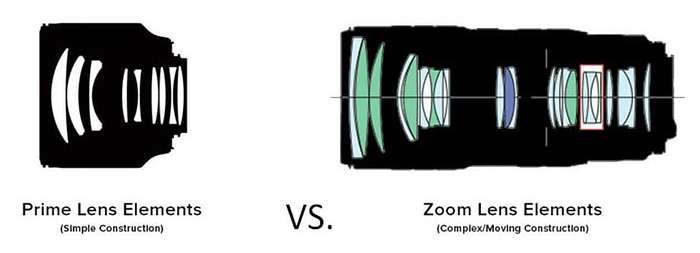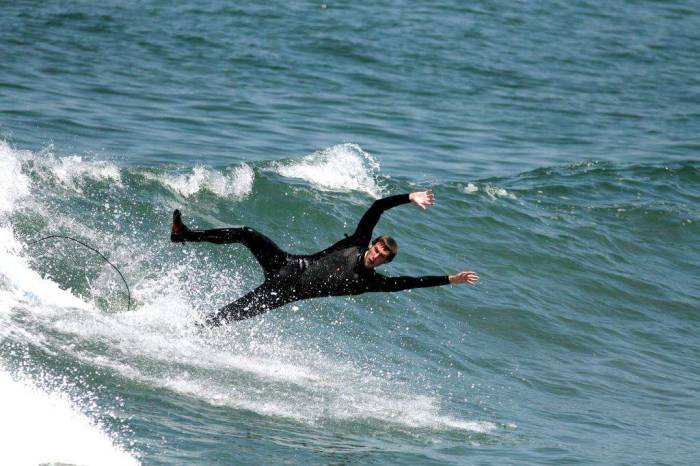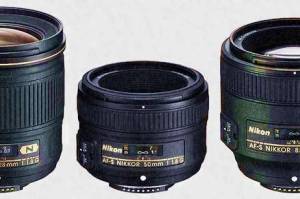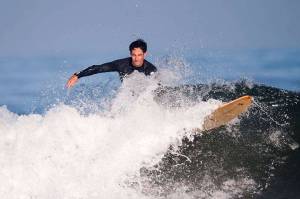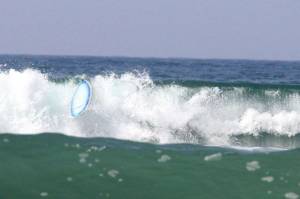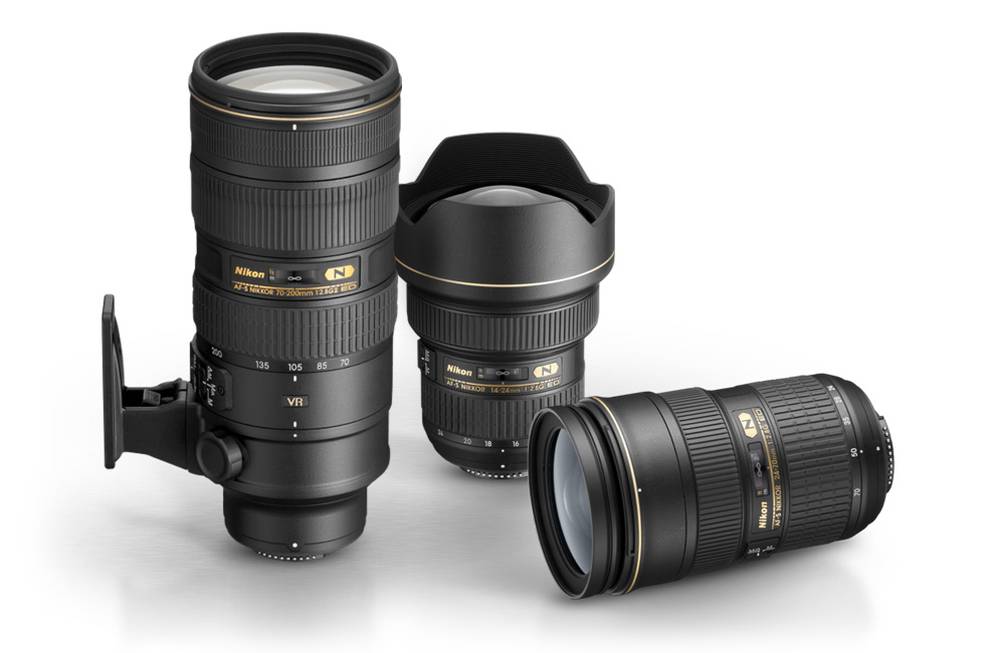Connie sent me the link to an
oped advocating zoom lenses. For the most part, I disagree. But some worthwhile points are made.
The author's two reasons for getting zoom are:

|
1. Cheaper; "By the way, if you are not under any specific budget restraints, ignore everything I said and buy that 600mm f/4."
|
Keep in mind that
lens technology won't change much. The focus speed and vibration reduction will get better - marginally. The optics leveled off in 1980, now they may fluctuate according to ROHM, weight, and meeting a target price. You'll need a new camera every few years, but
your lenses should survive quite a few bodies. Thus it is much more cost effective to buy an expensive lens. Yeah 10g's is a bit much, but when you're talking $1000 for a good lens versus $1500 for a great lens, spend the extra dough.

|
2. Laziness; "When I'm precariously balanced on a rock in a mountain stream, or at the edge of a cliff overlooking a great canyon (Zion canyon above), not having to change lenses to change focal length, or not having to move forward or backward physically to improve my composition is a real plus (puffins below)."
|
He's knowledgeable, but I'm not a fan of any of his shots. Yes, it's all aesthetics. But if he's complaining about the price of a 600mm or having to do the work of an assistant (fetch lenses), he isn't the creme de la creme. Indeed most pros don't change lenses, they change cameras (one lens per camera per assistant). You
shouldn't let extra weight dictate your lens choice unless it's going to affect your ability to get the job done.
And he goes on to
marginalize the prime benefits of speed, clarity, af speed, vr, minimum focus distance, etc. These can be hard to quantify and always depend on the subject/situation. But the bottom line is you always want the best equipment if it's feasible.
I grant there will be rare times that you will want a zoom lens because there's no time/space to change lenses. But think about the other 99% of your photographic life. Will THE ONE SHOT occur in this 1% or will it be in the other 99%? Could it be that in this other 99% you'll miss THE ONE SHOT because your focus was too slow? Because you paused to compose with zoom rather than snap on instinct?

|
When you don't have a lot of room, these lenses can be lifesavers. When you are hiking and trying to save weight this a great way to go.
|
Depends on the lens.
Weigh and size your zoom versus your 50mm and 35mm. Toss each against the wall to see which survives (but don't really). There are lots of factors to consider when you're going outdoorsing.
I'll tell you I did Shasta zoom was a good choice because space was at an absolute premium. And there was no way I was going to change lenses up there. The ideal setup would have been a 15-50mm.
More important than focal length, however, was aperture. An f/1.4 would have given so much more light in those early morning hours.
Bottom line:
- You only need one zoom lens, for the 30-120mm application. At sub-40 you generally want to get the smallest focal length available, so a sub-40 zoom will spend most of its time at minimum. At over 120 you generally want the largest focal length available. Seldom will there be a time that 200 is desirable and 300 is not.
- Maintain a nice quiver and take out the right equipment. If you're shooting studio you can bring the kitchen sink. If you're going on a dayhike you can take three or four lenses. If you're documenting civil unrest 30-80 might be your best bet.
| | | | |
|
|
Weight doesn't matter for something like a planned shoot where the distance of the subject is in a controlled environment. however, weight does matter for most cases with lens choice. In most instances a person can only carry one or two lenses.
|

Connie
|

Chris
|
For Shasta it was one lens. For a dayhike all I need is water, so I could carry my weight in lenses. There are lots of in betweens but I would say that in most instances a person can drive with ten lenses and carry three or four. And remember you can whittle down your choices of necessary lenses as you gather more information on the shoot.
|
|
|
And even if the person carries more, the time it takes to change out the lens for the right one result in missed opportunities.
|
|
Depends on the scenario. If you're doing landscapes or macro in the field you have plenty of time. If you're doing photojournalism of people you can use the 35 all day. You're stuck on this lens changing time. It shouldn't be more than twenty seconds (or two seconds to switch cameras).
|
|
|
For example, surfing in MB, even with the 300mm prime, I was limited in what I could shoot. I could not get the entire wave, only the surfer at the particular spot on the wave.
|
|
Not true, you could have switched out the 300mm at any point. But you didn't because waves are very wide and not very tall. Anything zoomed less than 300mm would have been boring. I'll grant people might be interested in one zoomed-out shot so they get an idea of what the day looked like. But that's it.
|
|
| | | | |
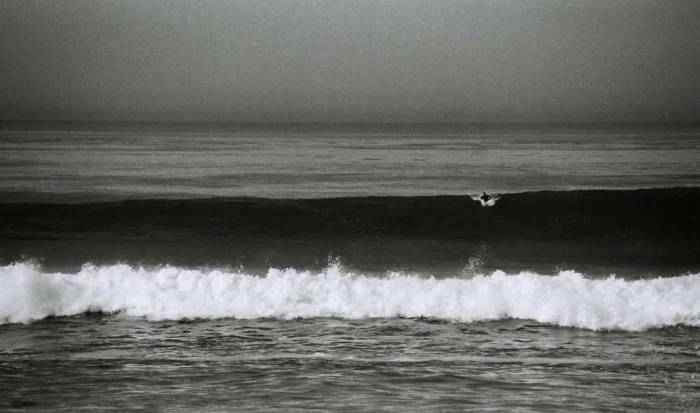
| | | | |

Chris
|
Also you're thinking like a zoomer. That's your new name, zoomer. The solution to getting a whole wave is not to zoom out. That means you end up with a very small subject and a lot of empty space outside the line. A primer would get down lower (yes it's dangerous) and shoot up the barrel (up the shoulder). That way you get the whole wave, don't waste space, have a clear, big shot of the surfer, and have the sweet depth of field effect down the line.
|
|
|
|
See what I mean when I say prime shooting encourages creativity?
|
|
|
|
Yes, I could have walked further south of the jetty, but in doing that I would miss out on a portion of shooting.
|

Connie
|
|
True, had you walked south into the water you would have missed out on a lot of shooting.
|
|
|
If I changed out my lens, I would miss out on the time to change lenses.
|
|
You missed plenty of shots gabbing with my mom. And that's fine, because there were a lot of waves and a lot of rides. You must realize that even if you have the right lens you still need to be aimed, timed (you had a lot that were just a moment too soon or late), and focused (some of these too).
|
|
|
As soon as you're holding the camera at the ready all the time, quick on the trigger, and perfect with the focus you can complain about how long it takes to change lenses. At that point I'll lend you my d70 to use as a secondary.
|
|
|
And what if there was an instantaneous shot that would be good to have both a far-view and a close-up view. I could not do that in one sitting.
|

Chris
|
Multiple bodies. And like I said, short of Mavs in winter, anything zoomed out is booooooooring.
|
|
|
THE ONE SHOT seems to be easier captured with a zoom.
|
|
Let's assume THE ONE SHOT is something photojournalistic, a once-in-a-lifetime scene that never occurs again (if it's in the studio or whatever, you have all the time and equipment you want). What's the most important thing? Timing. When you're snapping at a thousanth of a second, timing is everything. Composing with zoom will take you a second or two. At five frames/second that's five or ten shots that you just missed. For a once-in-a-lifetime occurance, your opportunity could be gone because you wanted to compose.
|
|
|
Sure cropping is a faux pas, but when you have a ten megapixel image, you can probably adjust your framing after the fact.
|
|
|
Let's say you're Solana shark shooting and you suddenly see him breach. Good example, you could sell it to Reuters for bank and it'll never happen again. It's virtually impossible to pan to him in time. But say you do. You don't have time to zoom, so you're better off without the temptation. Every millisecond spent not focusing means more frames - so here focus speed is key. Yes if you had a 1200mm lens there's a chance the frame would miss some important part of the scene. Doubtful. More likely, the less blue water around your frame, the more you'll see jagged teeth and piercing eyes.
|
|
|
Minor factors that could have impact would be lens speed and vibration reduction. For all of these factors prime lenses are superior to some extent.
|
|
|
Now back to the possibility that THE ONE SHOT is in a studio with all the time and equipment you want. What are your concerns? Sharpness? Low dof? Better vr? Focus speed? All these are characteristics of prime lenses. And keep in mind these factors stand out much more in a well-prepared studio shot.
|
|
|
I guess prime and zoom both have their purposes.
|

Connie
|

Chris
|
Yes, and you are all set on zoom with that fifteen pound monstrosity. You don't need twelve zoom lenses. You need one zoom lens and eleven prime lenses. And carry the ones that are appropriate.
|
|
| | | | |
Some posts from this site with similar content.
(and some select mainstream web). I haven't personally looked at them or checked them for quality, decency, or sanity. None of these links are promoted, sponsored, or affiliated with this site. For more information, see
.


